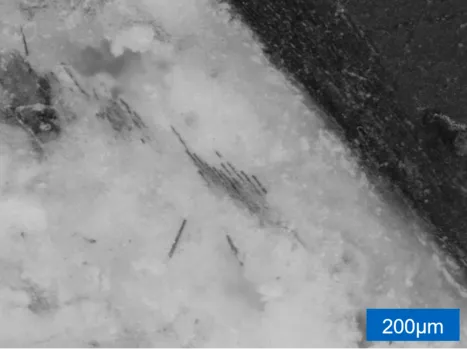GiveWasHy – Water-Soluble Hybrid Moulding Material Produced by Casting Technology
The production through casting frees the fibre-reinforced salt cores for aluminum die casting, which have already been successfully tested in FasSAd but have been pressed until now, from the restrictions of a press tool, so that completely new three-dimensional, complex shapes become possible within a reduced cycle time.
Project Partners
Haas Metallguss GmbH; Apppex Product Development, Prototypes, Parts GmbH
Duration
01.07.2022 – 30.06.2024
Funding authority
German Federal Ministry for Economic Affairs and Energy
Motivation
Salt cores are state of the art in the automotive industry, especially for engine components such as cooling channels in pistons. The lost core enables hollow structures in high-pressure die castings. The brittle failure behavior can be effectively avoided with fiber reinforcements through so-called pseudo-plastification. Until now, the fiber reinforcement was introduced in the wet compression molding process. Due to the production from the melt phase, significantly more complex shaped components are possible than with uniaxial pressing tools. In addition, the low viscosity of the molten salt enables good impregnation of the semi-finished fiber products without great external force. This means that preforms made of continuous fibers can be used, which significantly improve the thermomechanical properties compared to short fiber reinforcement (up to approx. 30 mm). The rapid solidification of the melt also shortens the cycle time compared to the lengthy drying after the wet compression molding.
Method
Since the proposed composite material is unexplored and unique so far, at first, suitable fiber materials are tested that can withstand the high melting temperatures of salts up to 800°C and have sufficient fiber-matrix bonding to achieve the desired reinforcement effect. In addition to the flow properties of the salt, it is also necessary to characterize its shrinkage, which is strongly limited by the fibers but must not lead to lagging residual stresses or weak points due to pores. Suitable fillers and salt mixtures are being investigated for this purpose. In order to make the most of the outstanding advantage of the (local) preform reinforcement, new concepts and materials are being researched in tooling technology. This has to be done for the preforming itself as well as for the use of the preform in the salt casting tool, so that optimal alignment and stabilization of the continuous fibers during salt casting is guaranteed. Subsequently, the cores will be tested in aluminum die casting to prove their robustness. Finally, recycling possibilities are analyzed, because the high costs of the continuous fiber material must be neutralized through circular economy. To this end, new concepts are already being considered in the preform production that allow the salt to be easily removed, but without completely destroying the preform.
Acknowledgement
The chair thankfully acknowledges the funding provided by the German Federal Ministry for Economic Affairs and Energy under the scheme “Zentrales Innovationsprogramm Mittelstand (ZIM)” on the research project dealing with casted, fiber-reinforced salt cores for light metal casting (“GiveWasHy – Gießverfahrenstechnisch hergestellter wasserlöslicher Hybridformwerkstoff”, funding code: KK5135810SH1)

Contact Persons
Dominik Boos, M.Sc.; Dr.-Ing. Swen Zaremba
